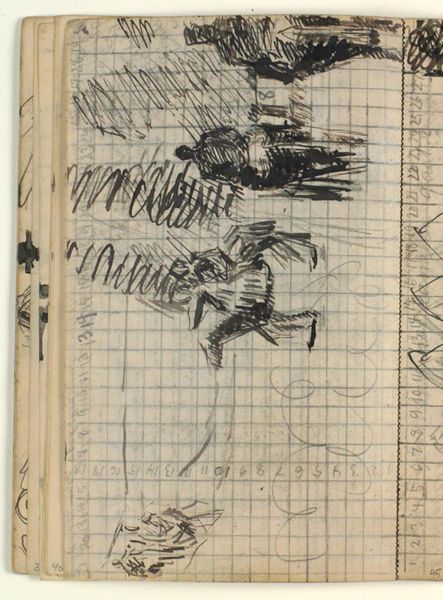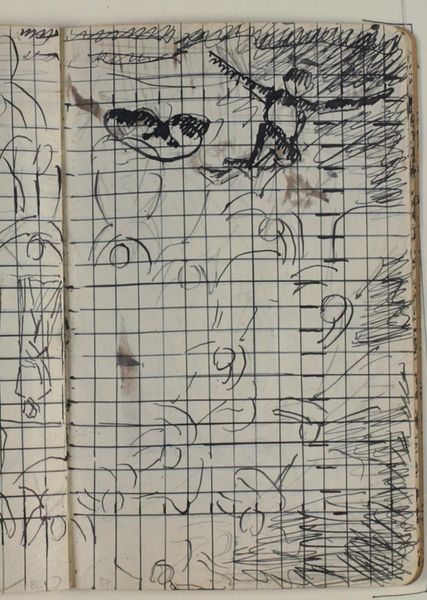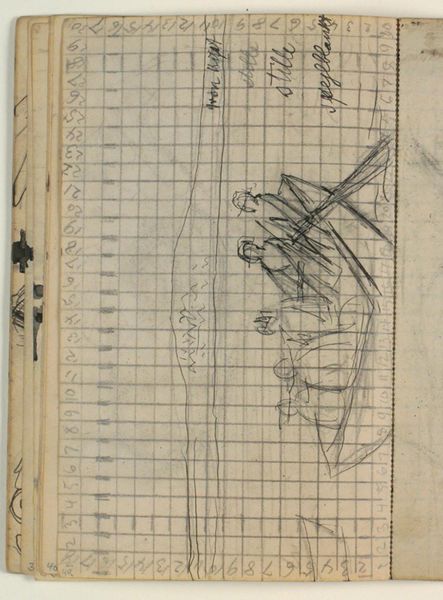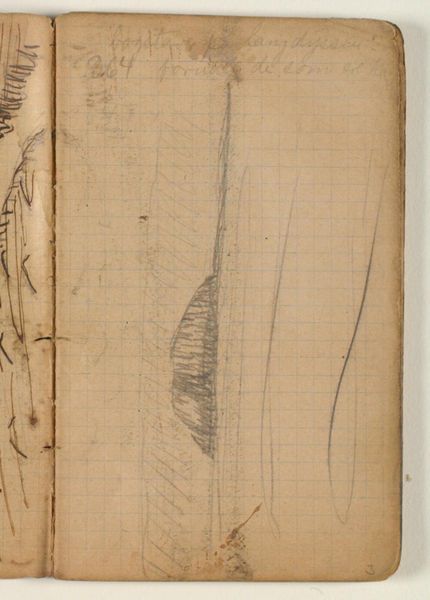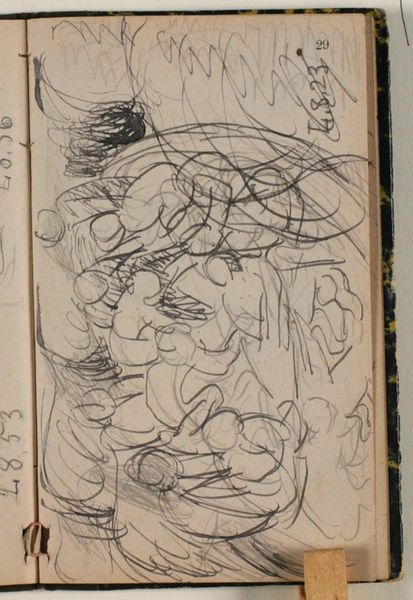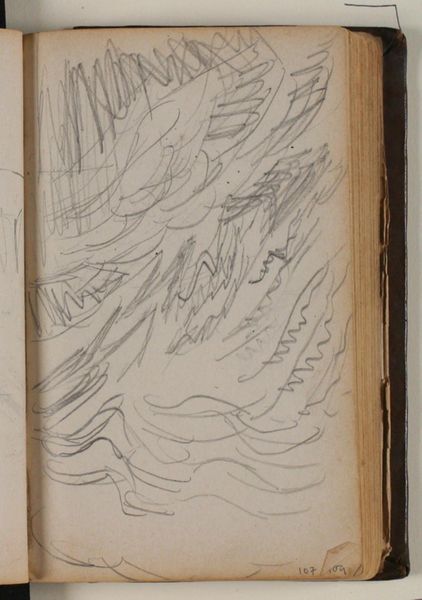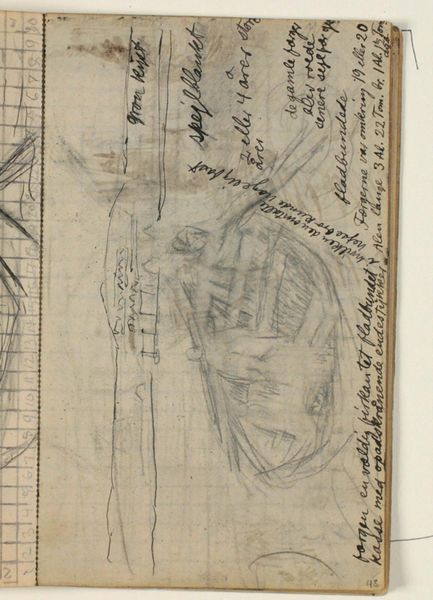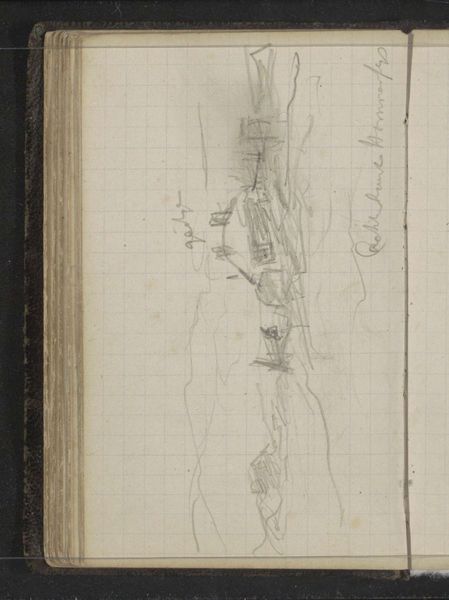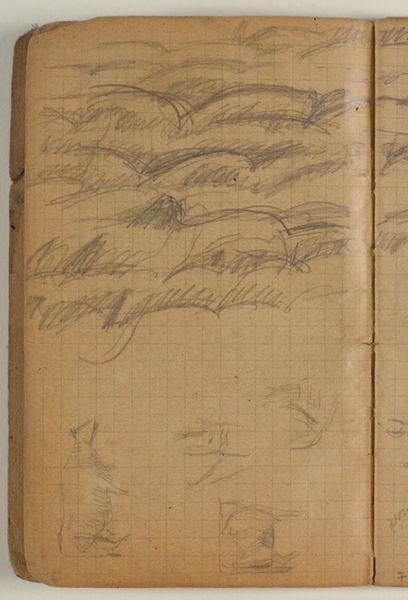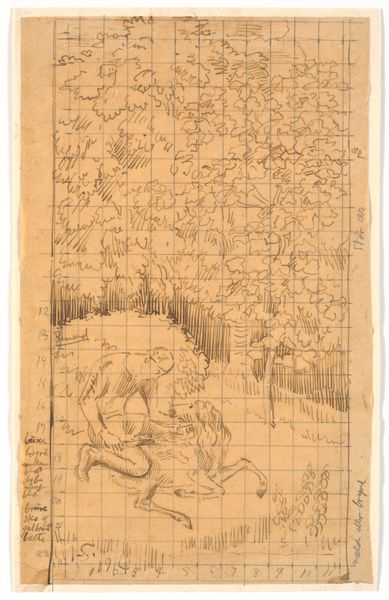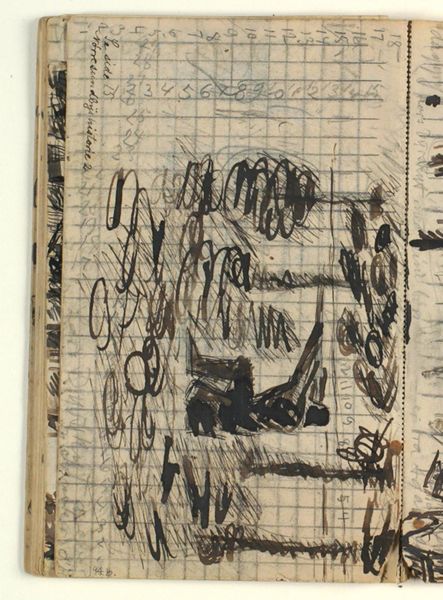
Udkast til "Skipper Klement ikaprer en Lybekker", kvadrering 1932 - 1935
0:00
0:00
drawing, paper, ink
#
drawing
#
toned paper
#
pen sketch
#
sketch book
#
hand drawn type
#
paper
#
personal sketchbook
#
ink
#
sketchwork
#
geometric
#
sketch
#
pen-ink sketch
#
pen work
#
sketchbook drawing
#
sketchbook art
Editor: So, this is "Udkast til 'Skipper Klement ikaprer en Lybekker', kvadrering," a sketch by Niels Larsen Stevns from 1932 to 1935. It's ink on paper, and you can tell it's a preparatory study, a working out of ideas. It's a busy image. What kind of symbolism do you see in something that feels so spontaneous? Curator: Spontaneity is fascinating, isn't it? Because even in something that seems like a quick sketch, symbols are always present. Notice the ship itself. A ship often represents a journey, a quest. This journey, as indicated by "Skipper Klement," connects to historical narratives of power, conflict, and the capturing of Lübeck ships which can further suggest cultural rivalries and economic dominance. What emotions do those historical associations evoke? Editor: Well, conflict and struggle, definitely. It seems more complicated than just a sea journey. Curator: Exactly. Even the grid, that kvadrering in the title, can symbolize order, control, and the artist's attempt to contain and understand the chaos of the historical event. The sketch transforms history itself into information. Do you think the choice of toned paper impacts our reading of the symbols present? Editor: It gives the drawing a sense of age, lending gravitas perhaps? Making the event feel distant, but the act of sketching makes it alive and urgent, it is contradictory. The way marks have been added, subtracted and drawn over one another makes one conscious of time. Curator: Precisely. And what does that say about how we engage with our past and try to capture it visually? Stevns gives form to both history and cultural memory itself. It makes the invisible, visible. Editor: I see that now, I had missed the layers and cultural implications beneath the surface of the quick lines. Curator: Exactly! And understanding those layers is the joy of interpreting symbols, right?
Comments
No comments
Be the first to comment and join the conversation on the ultimate creative platform.
